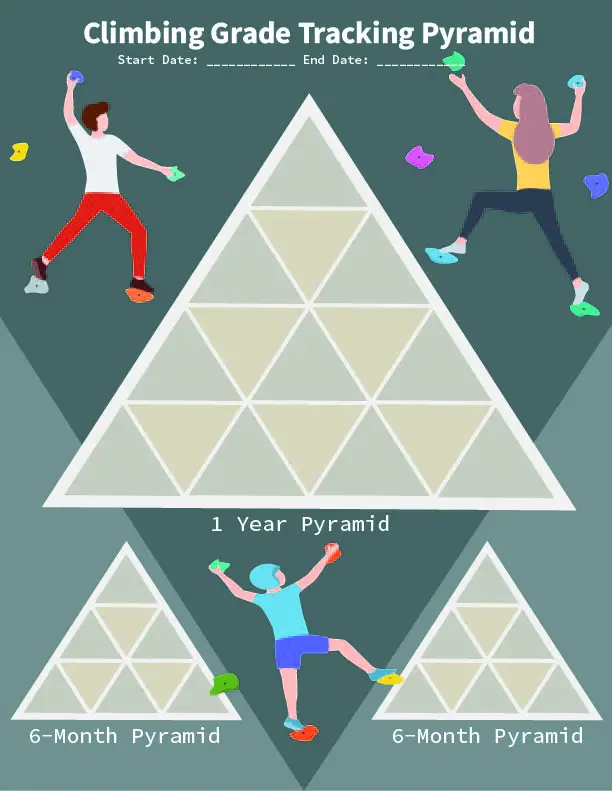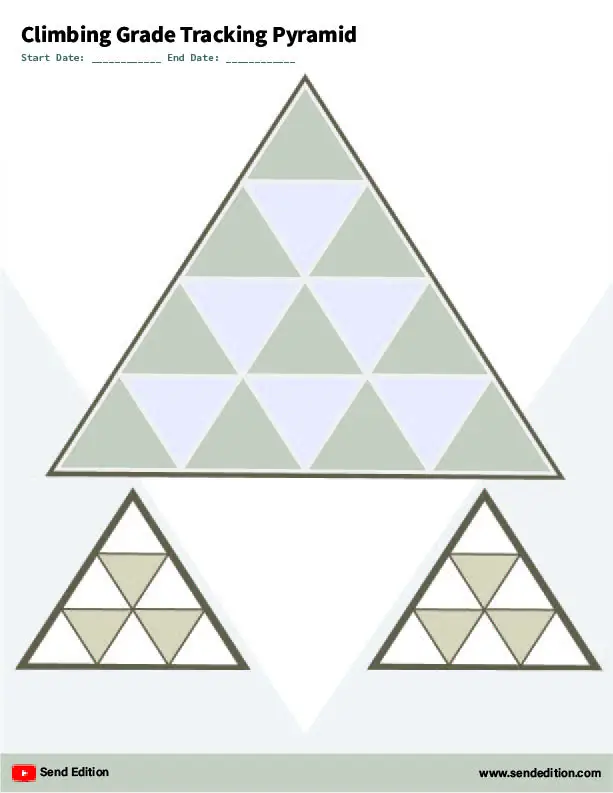As promised, we’ve sent you an email you can use to access this page from any device that you want to download these to. Not sure which version you want? Take both!
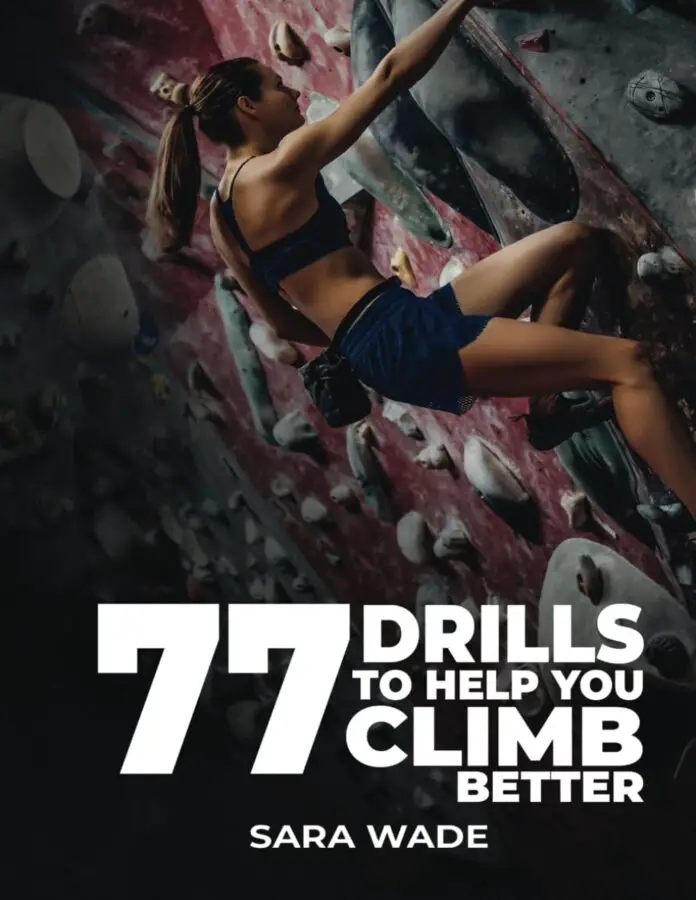
Bonus 10% OFF
77 Drills to Help You Climb Better (Digital Download)
Buy the paperback version on Amazon here
Improve your climbing skills with this collection of targeted drills designed to enhance technique and build strength.
Our specialized exercises cover a range of techniques, from fortifying core strength to mastering advanced maneuvers like flagging, all aimed at boosting your confidence and abilities.
Inside these pages, you’ll discover practical drills that foster adaptability, efficiency, and climbing proficiency.
Whether you’re a beginner looking to progress, an experienced climber refining your skills, or a coach seeking valuable training tools for clients, this book offers a focused approach to climbing excellence through skill-building exercises.
Coupon Code: TPD-10
How To Use A Climbing Pyramid
To use a climbing pyramid, you will draw a pyramid and fill in each row with the climbing grades that represent what grade you should be completing. The bottom row should be routes that you can mostly flash but it’s ok if you occasionally need a couple of tries to complete that grade.
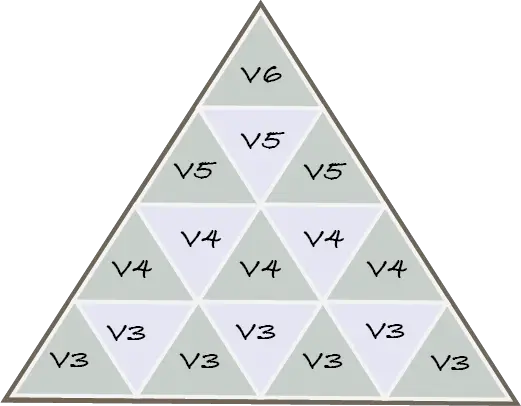
For this example, we are using bouldering V-grades but it works for rope climbing as well. Since the climber tends to flash V3s, we have put V3s as the bottom row of the pyramid. Keep in mind that this pyramid is based on your current grade, not your goal grade. After you have created your pyramid, it’s time to break down the pyramid even more so you know what grades you should be working on.
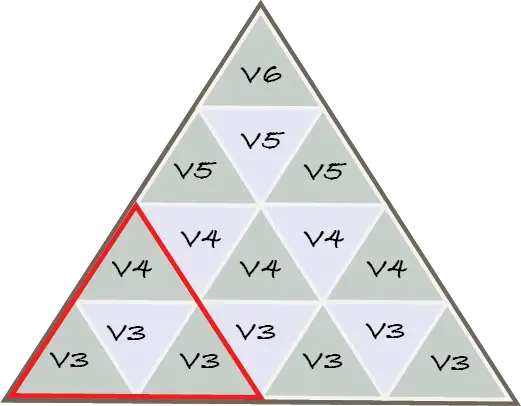
Start by completing the smallest of the pyramids. In the case of this example, the climber will complete three V3s and then one V4. You don’t have to flash these climbs, you just need a clean completion of the climb. This means that you don’t fall, take breaks, or grab quickdraws while completing the climb.
After you have completed the smaller pyramid, it’s time to start working on the medium size pyramid.
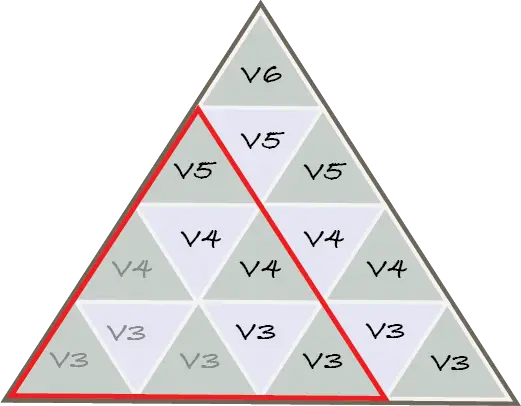
As you can see in the example above, the climber completed the smallest triangle (greyed out V-grades). To complete each triangle, you don’t have to complete the climbs in order of difficulty. In fact, by going in order of difficulty, you are more likely to get caught in that grade if you go in order so consider trying the route at the top of your medium size pyramid.
Climbers tend to treat this pyramid as a project tracker and that is probably the easiest way to describe it.
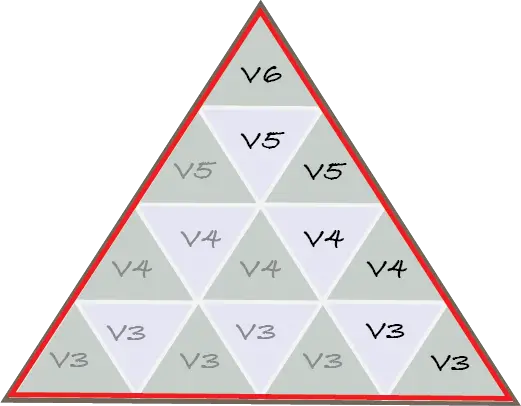
As you get to the top of your pyramid, the grade at the tip may still feel practically impossible. However, trying the route a few times while trying to complete the pyramid will help you build confidence. Additionally, make sure that you complete all of the routes on the pyramid before considering it complete. This will give you a good foundation of route grades so you are more likely to keep progressing and are less likely to get stuck at a grade.
Common Mistakes Climbers Make While Using the Pyramid
Just like any other training for climbing, there are a few common mistakes that you should avoid when using the pyramid for your training.
Mistake 1: Updating Pyramid Before Completing Your Pyramid
This is one of the most common mistakes for people when they are first introduced to the pyramid. For example, once I finished the medium-sized pyramid, I tended to create a completely new pyramid with the grade a level up from my previous one.
The problem with this is that the grade at the top of your first pyramid was never accomplished and still seems practically impossible. This made it so that I was getting caught on the second line of grades to the top and it was harder for me to complete the pyramid.
Instead, complete the pyramid completely (even if you finish a route of the grade at the top of the pyramid) so that you have a good foundation of climbing routes under your belt.
Mistake 2: Completing Pyramids Row by Row
Another common mistake that climbers tend to make is that they complete a row of climbs before going onto the next grade. This is probably because climbers tend to be more comfortable repeating grades than they are at levels up to the next grade.
However, for this pyramid to be as effective as possible, it is ideal to complete the pyramid by going from the mini pyramid to the medium size pyramid to the full pyramid. This will ensure that you are pushing your limits throughout your training by completing harder routes at the same time as building a decent foundation.
Tips for Using Pyramids for Climbing Training
The pyramids are a great way to improve your training focus and if you’re looking for some tips to make it even better, here are some that I’ve learned over the past few years as well as some from professional climbing coaches.
Use Smaller Pyramids For Individual Training Days or Training Cycles
Once you get into the higher grades, leveling up your climbing can be a lot longer and harder process. For those of you that feel completely stuck on your pyramid, consider creating smaller pyramids that mimic that of the medium size pyramid for your training day or training cycle.
Create Pyramids Based On Your Current Skill Level
Sometimes, climbers get excited and use the pyramid as their goal tracking. Though this can be a fun visual way to see your progress toward your ultimate goal, it is likely that the pyramid of your dreams is a little ways away from your current grade and can make training frustrating.
For this reason, it is ideal that you use the climbing grade that you can sometimes flash as your base level. Once you complete the Pyramid, then you can move to the next grade.

